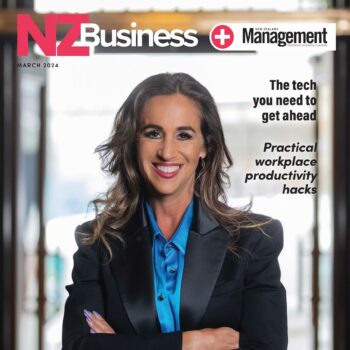How to make EOFY less taxing
It’s that time of year again – a taxing time for businesses as they rush to meet their End of Financial Year accounting obligations. To help you meet the March 31st deadline NZBusiness shares some EOFY tips from the professionals.
The end of each financial year is inevitably an extremely busy time for business owners. Getting everything in order for the March 31st accounting deadline is also incredibly time consuming.
According to MYOB’s latest SME snapshot, preparing for tax time takes, on average, more than a standard working week of time (that’s 6.7 days) for New Zealand’s SME operators.
“One of the particularly challenging and time-consuming tasks for SMEs readying their accounts in the run up to March 31st, is following up invoice payments,” explains Leanne Berry, MYOB’s community relations manager, partners. “Our survey shows that more than a third of SMEs will spend over eight hours of their time chasing up payments in the lead up to tax time. We can also see from our own data that, on average, SME invoices are paid around 26 days after they are issued.” This must be factored in, she says.
There are a few key areas business owners should pay close attention to in the run up to the End of Financial Year (EOFY) deadline.
“For employers, checking that payroll reporting matches Inland Revenue records is a good way of identifying any discrepancies,” says Berry. “For goods-based businesses, allowing plenty of time for a stocktake will not only reduce stress, but also provide a solid sense of what is and isn’t selling, informing future inventory decisions.
“Additionally, given the process of following up invoice payments can take up significant time, running debtor and creditor reports ahead of time will help business owners to identify late payers and surface any payment errors, while business management software can take care of initial follow-ups with automated payment reminders.”

If you’re struggling to process all the numbers required to meet your EOFY deadline, perhaps it’s time to embrace a more advanced business accounting software solution. Xero and MYOB are two of the leading ones, but there are many more out there.
“When it comes to tax time, there are plenty of digital tools and solutions available to local businesses that can make a fundamental difference, not only at the end of the financial year, but throughout the entire year,” says Berry. “For example, apps to capture, store and digitally upload receipts can massively cut down on paperwork, while point of sale and e-commerce solutions can provide real-time insights into stock movement and performance.
“There’s also e-invoicing, which helps business owners issue invoices quickly and securely, and – of course – business management solutions like MYOB Business, can make the whole process of running a business, simpler.
“As a New Financial Year’s resolution, we’d encourage businesses to continue to think ‘digital first’ and assess if there’s a solution that can make them more efficient and more productive. Hand-in-hand with strategic counsel and advice from their accountant, bookkeeper or financial advisor, business owners can really supercharge their operations.”
A tax-time checklist for newbies
As EOFY rushes up, here are some timely checkpoints to consider, courtesy of Paul Churchman, Xero’s head of partner sales, New Zealand.

- Get on top of your outstanding payments and invoices. Make sure you are up to date on your income by chasing any invoices from customers who haven’t paid yet, and square up anything you still owe. Save time on sending invoices and reminders in the new year by using an accounting software that does it for you.
- Evaluate your business expenses. You may be able to claim business expenses in your tax return to reduce the total tax you need to pay. This is a great question to ask your accountant.
- Get up to date with GST. If your business is GST-registered, you’ll need to sum up and pay any GST you owe at the balance date for the end of the financial year. You can do this online, with accounting software or through your myIR account with Inland Revenue.
- Take advantage of credits. Depending on your business, you could be eligible for credits that can lower your tax bill.
- Review your inventory or services. As part of your year-end review, consider your physical inventory and/or services. This helps confirm what you still have on hand, and that your assets are accurately recorded.
- Take a good look at your financial records. Take stock of your payroll, profit and loss statements, balance sheets, and cashflow records at the balance date. This helps you to understand how much profit you might have made, view your overall performance for the financial year, and get ready to file tax returns.
- Assemble your tax documents. To file your end of fiscal year tax return, you’ll need to finalise payroll and gather your income statements and business expense records.
- Check in with your people. It’s a great idea to connect with staff, customers, and business partners. Ask for feedback on what’s working, what people would like to see more of, and any processes or operational kinks that need smoothing out.
- Set yourself some goals for the new financial year. Consider your business’s accomplishments and how you could build on those. Set clear, realistic goals for growth opportunities you’ve identified, and identify solutions for challenges the business faced this year.
- Give yourself time to breathe. Take time to look after yourself. The end of the financial year brings a surge in work to-dos, and it’s important to move into FY25 with strength. Caring for your wellbeing ensures you’re at your best to care for the business.
For more helpful tips on preparing for EOFY go to:
Fergus (Ideal for tradies)







